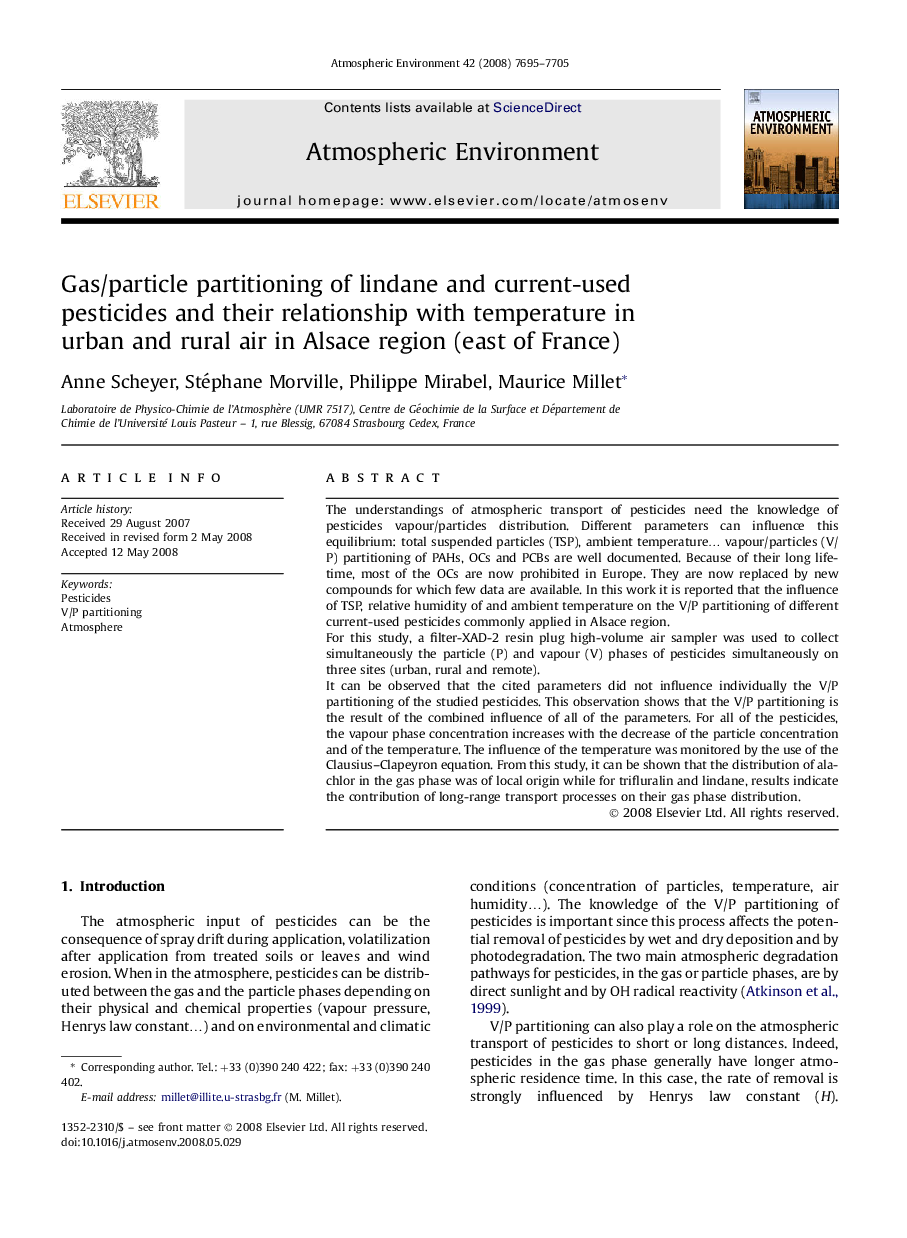| Article ID | Journal | Published Year | Pages | File Type |
|---|---|---|---|---|
| 4441617 | Atmospheric Environment | 2008 | 11 Pages |
The understandings of atmospheric transport of pesticides need the knowledge of pesticides vapour/particles distribution. Different parameters can influence this equilibrium: total suspended particles (TSP), ambient temperature… vapour/particles (V/P) partitioning of PAHs, OCs and PCBs are well documented. Because of their long life-time, most of the OCs are now prohibited in Europe. They are now replaced by new compounds for which few data are available. In this work it is reported that the influence of TSP, relative humidity of and ambient temperature on the V/P partitioning of different current-used pesticides commonly applied in Alsace region.For this study, a filter-XAD-2 resin plug high-volume air sampler was used to collect simultaneously the particle (P) and vapour (V) phases of pesticides simultaneously on three sites (urban, rural and remote).It can be observed that the cited parameters did not influence individually the V/P partitioning of the studied pesticides. This observation shows that the V/P partitioning is the result of the combined influence of all of the parameters. For all of the pesticides, the vapour phase concentration increases with the decrease of the particle concentration and of the temperature. The influence of the temperature was monitored by the use of the Clausius–Clapeyron equation. From this study, it can be shown that the distribution of alachlor in the gas phase was of local origin while for trifluralin and lindane, results indicate the contribution of long-range transport processes on their gas phase distribution.
